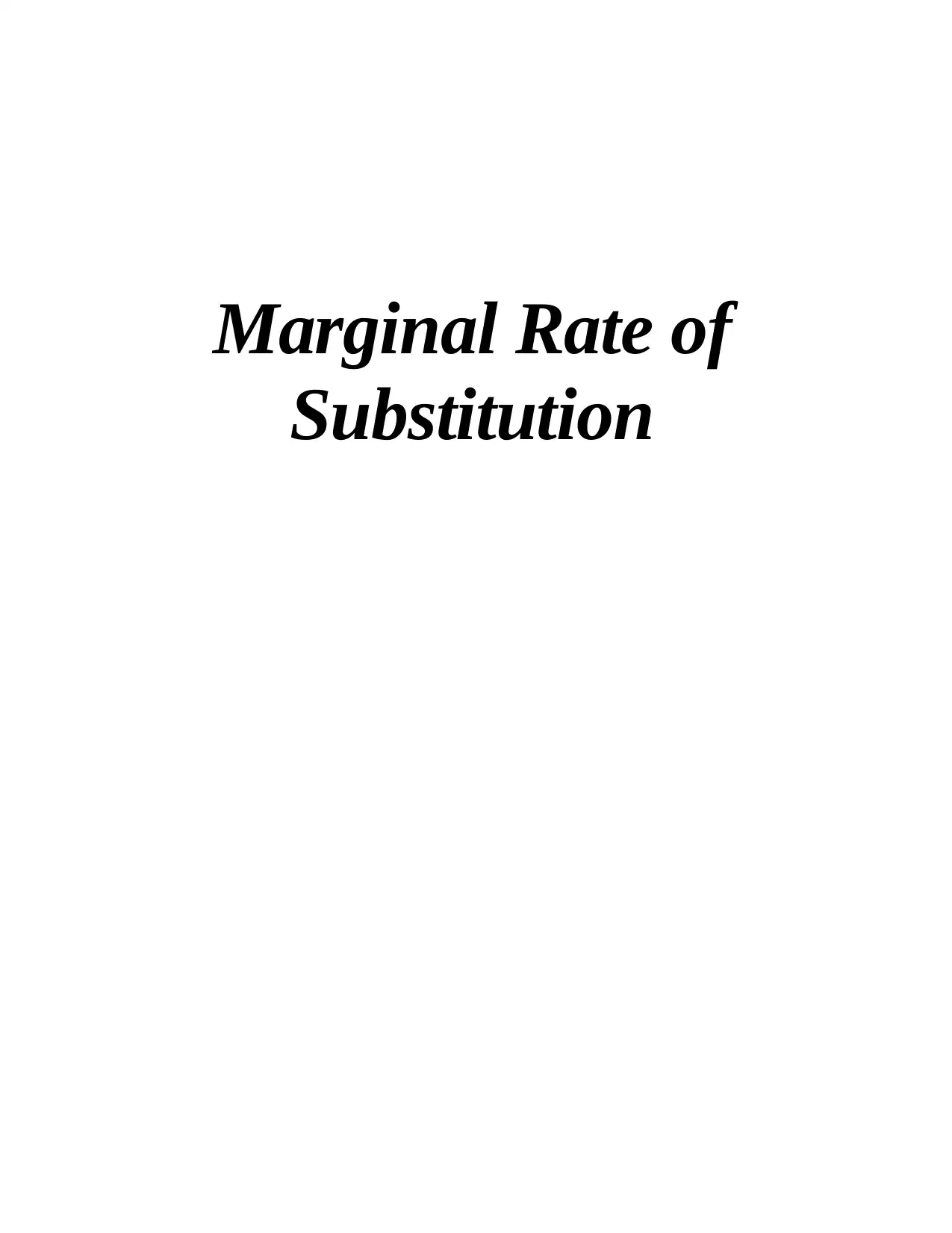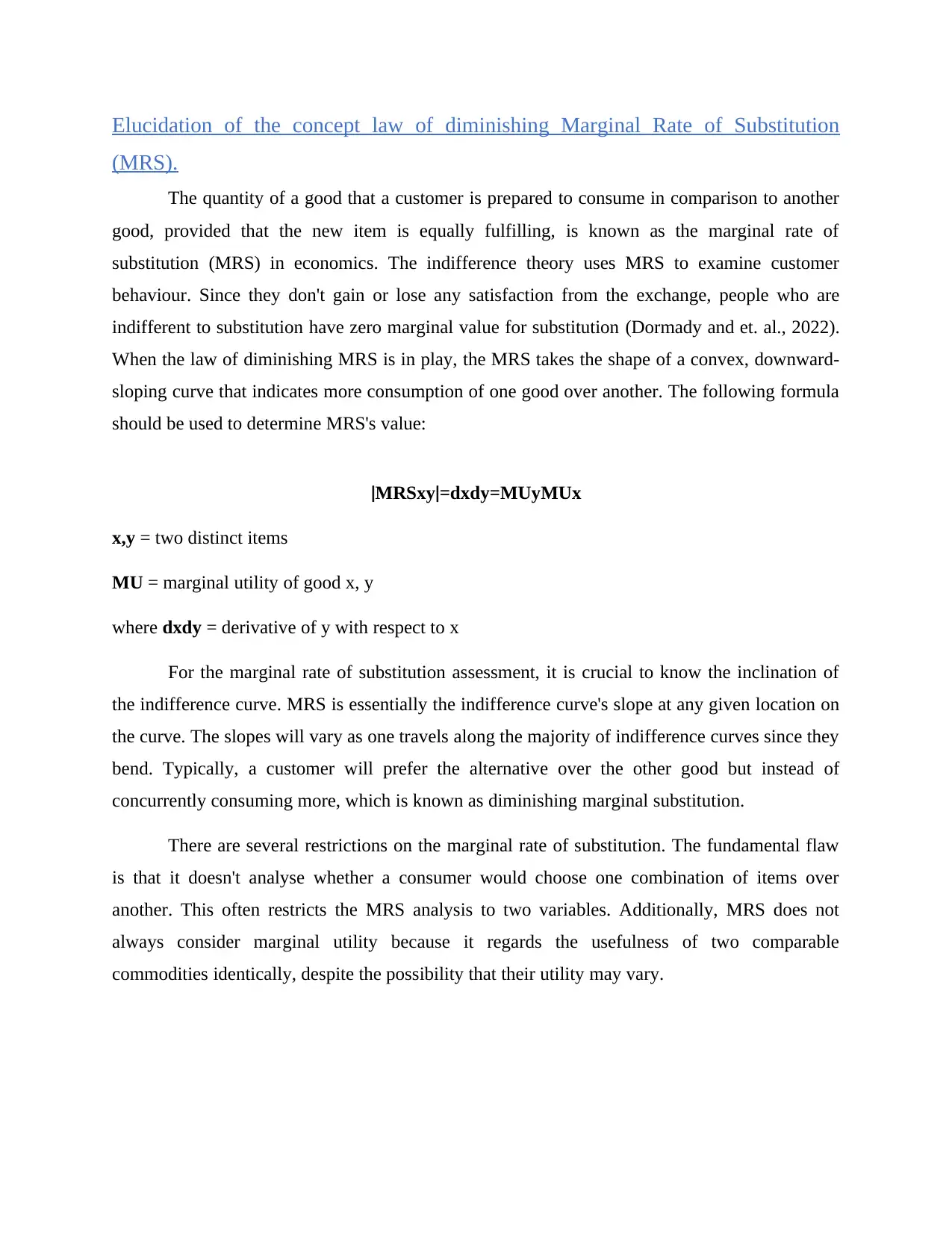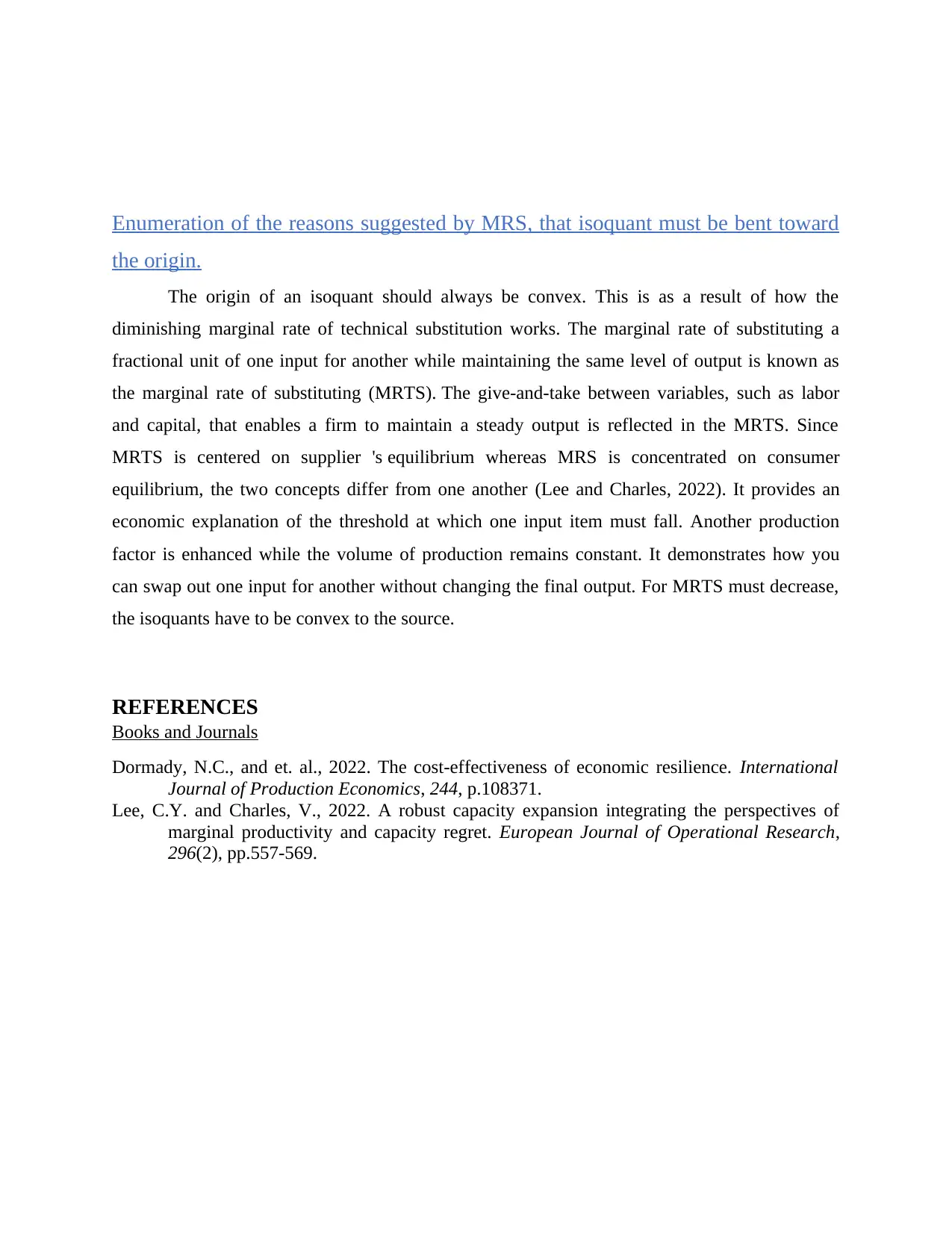Analysis of Marginal Rate of Substitution and Isoquant Convexity
VerifiedAdded on 2023/06/04
|4
|628
|475
Essay
AI Summary
This essay provides a detailed explanation of the marginal rate of substitution (MRS) in economics, focusing on its definition, formula, and the law of diminishing MRS. It explores how MRS shapes consumer behavior and influences the convexity of isoquants. The essay also contrasts MRS with the marginal rate of technical substitution (MRTS), highlighting their differences and emphasizing the importance of MRS in understanding consumer equilibrium. Furthermore, it discusses the limitations of MRS, particularly its focus on two variables and its simplified treatment of marginal utility. The analysis is supported by references to relevant books and journals, providing a comprehensive overview of the subject. Desklib offers a platform to explore more such solved assignments and study tools.
1 out of 4











![[object Object]](/_next/static/media/star-bottom.7253800d.svg)